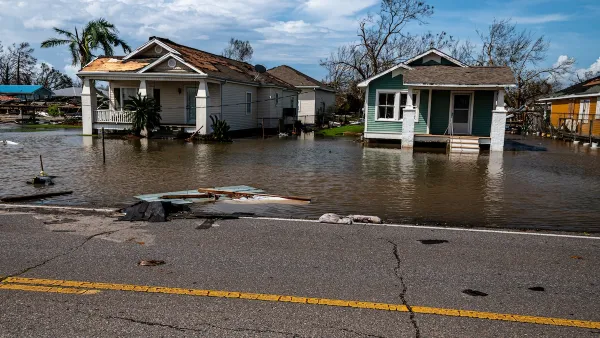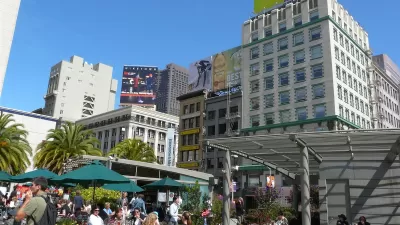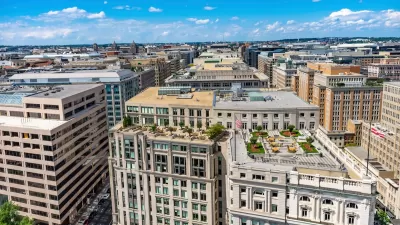Temporary storefronts—for everything from high fashion to big-box retailers to "foodie"-favored restaurants—are all the rage. A new study quantifies the economic clout of pop-up businesses.
If your city hasn't already, it would probably be a good idea to figure out how to allow retail businesses to use underutilized or vacant storefronts for pop-ups. According to an article by Teresa Novelino, "pop-up businesses, whether their locations are a historic hotel or a humble church basement, have over the last decade quietly spread across the United States and evolved into a big business."
"These operations collectively bring in between $45 billion and $50 billion in revenues annually, according to a study conducted by the Chicago-based marketing firm PopUp Republic," adds Novelino.
The article cites specific examples of recent pop-ups in New York (the most surprising of which, perhaps, is a holiday pop-up by the big-box store Target located in Chelsea). Novelino also details the appeal of the pop-up on both sides of the retail equation: for retailers short-term lease and rent arrangements were attractive in the post-recession market, and consumers who are looking for a "touch and feel" shopping experience are also attracted to the temporary nature of the pop-up shops.
FULL STORY: How pop-up retail exploded into a $50B business

Planetizen Federal Action Tracker
A weekly monitor of how Trump’s orders and actions are impacting planners and planning in America.

Vehicle-related Deaths Drop 29% in Richmond, VA
The seventh year of the city's Vision Zero strategy also cut the number of people killed in alcohol-related crashes by half.

As Trump Phases Out FEMA, Is It Time to Flee the Floodplains?
With less federal funding available for disaster relief efforts, the need to relocate at-risk communities is more urgent than ever.

LA Transit Ridership Plummets Amidst ICE Raids
LA Metro’s bus and rail lines are seeing up to 15 percent lower ridership in the wake of violent immigration arrests.

A New Texas Neighborhood is Powered by Geothermal Energy
The 7,500-home development claims to be Austin’s ‘first zero energy planned community.’

Data: In Rural America, Mobile Homes are Heat Traps
Extreme heat is often viewed as an urban problem, but rural communities face their own unique risks.
Urban Design for Planners 1: Software Tools
This six-course series explores essential urban design concepts using open source software and equips planners with the tools they need to participate fully in the urban design process.
Planning for Universal Design
Learn the tools for implementing Universal Design in planning regulations.
Heyer Gruel & Associates PA
JM Goldson LLC
Custer County Colorado
City of Camden Redevelopment Agency
City of Astoria
Transportation Research & Education Center (TREC) at Portland State University
Camden Redevelopment Agency
City of Claremont
Municipality of Princeton (NJ)




























